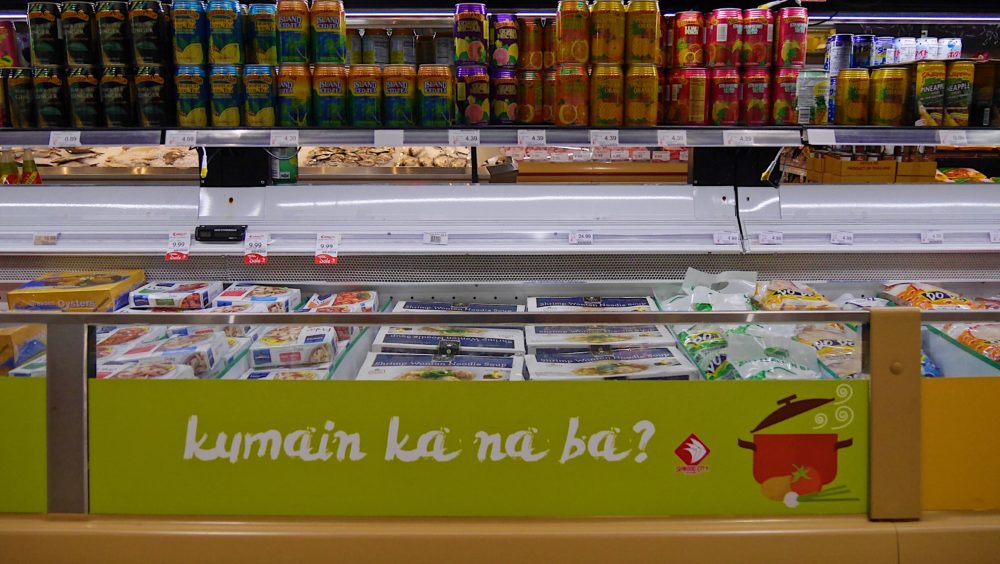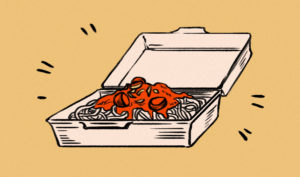
If there’s one thing I’ve learned from traveling around the Philippines, it’s that you can’t go two blocks without seeing either Jollibee or Chowking. It goes without saying that they are the twin kings of fast food in the Philippines. People say Jollibee is the McDonald’s of the Philippines, but I’d say that’s not entirely accurate. Jollibee has always done a good job in providing that Filipino taste, no matter where in the world it is made. There’s something about that unusual sweet spaghetti with sliced red hotdogs that holds up, but make no mistake, a serving of Jollibee in its home country is where it’s at.
Although Chowking is Philippines-based, their menu combines Western fast food service with Chinese cooking. It may come off as strange, but out of all the things I could’ve chosen to recommend, I personally would recommend the Chinese-style fried chicken. Sorry, it’s just that good!
You might find that most restaurants in the Philippines have Halo-Halo listed as an option for dessert. Halo-halo is a colorful dessert with a variety of things, hence the translation of “Mix-Mix.” This popular dessert consists of shaved ice or mango ice cream (or both), leche flan (similar to caramel custard), colored gulaman (dried agar that’s used to make jelly-like desserts), sweetened white beans, sweetened kaong (sugar palm fruit), macapuno (coconut sport), sweetened chickpeas, pinipig (pounded rice flakes), evaporated milk, etc. I know the ingredients sound a bit overwhelming, but the minute you have a spoonful of it, you’ll understand. It’s the perfect cooldown for the endless summers in the Philippines.
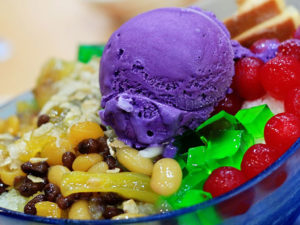
Speaking of ube, it’s a common theme in Filipino desserts. Ube halaya, ube ice cream, ube mamon (filipino sponge cake), ube macapuno roll, etc. Ube is also known as purple yam and is an extremely popular flavor among Filipinos and has come to produce the country’s greatest purple creations.
One great hotspot for food and shopping is Seafood City. After getting shopping out of the way, you can choose to eat at Jollibee, Chowking, Grill City, or CrispyTown. If you have room for some cake, you can also hop on over to Red Ribbon or Goldilocks. Craving Filipino breads and pastries? No worries, Valerio’s bakery can help, although only the Seafood Cities in the US have Valerio’s bakery in their midst.
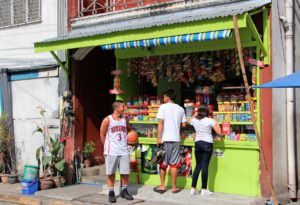
Choosing a pasalubong (souvenir) was a big thing in my family. When my grandpa visited us in the US, we would usually ask him to buy certain things. Otherwise known as “bilin naman” (our request). His pasalubongs (souvenirs) usually consist of sitsirya (snacks). Filipino sitsirya (snacks) can be found at your local Filipino convenience stores, like a neighborhood sari sari store. You may find goodies such as sweet corn (not to be mistaken as corn puff cereal), clover barbecue chips, boy bawang (basically garlic corn nuts), skyflakes crackers (usually pronounced like skyplex), nagaraya nuts (sounds Japanese but actually based in the Philippines and comes in flavors like adobo, garlic, barbecue, etc), and chicharon (crunchy, fried pork rinds).
I grew up eating four meals in a day. A snack / light meal between lunch and dinner is known as meryenda. Depending on what you’re craving, anything can be meryenda. Some of my personal favorites are ginataang mais (filipino coconut rice pudding with corn) or ginataang bilo-bilo (containing sticky rice balls, plantain bananas, sweet potatoes, and tapioca pearls cooked in coconut milk), champorado (chocolate rice porridge), suman malagkit (rice cake wrapped in banana leaves that are often eaten with sugar), polvoron (spanish shortbread), hopiang hapon (cake dough pastry filled with sweet azuki bean paste), and palitaw (rice cakes covered in coconut).
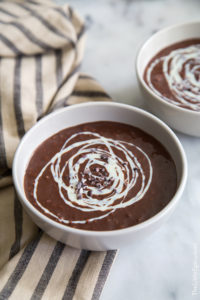

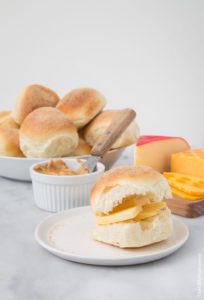
Pan de sal is the main bread roll of the Philippines. It’s like our poster boy for bread. It can be eaten for breakfast, lunch, meryenda, or dinner. You can also add different fillings inside by simply cutting into the middle. But the absolute best way to enjoy pan de sal is fresh out of the oven. All it would take is a simple walk to the pan de sal store is all that’s required.
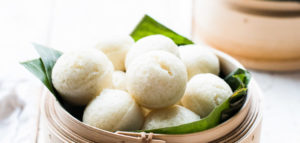
Although we were under Spanish rule for years, it’s common to overlook what “puto” meant, because it ended up being the name of a popular dessert. If you ever hear Filipinos say, “I love to eat puto”, rest assured, they are referring to the steamed rice cake version!
Espasol is yet another variation of rice cake which is cooked in coconut milk and dusted with toasted rice flour. I realize now how much rice cake has impacted my childhood. So much so that, on impulse, I made some:
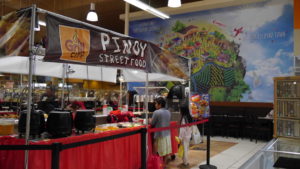
Let’s talk about street food. From chicken intestines on a stick and duck embryos known as balut, to delicious chicken and pork barbeque, lumpia (fried spring rolls), turon (spring rolls filled with jackfruit), fish balls and lobster balls, there’s a wide variety to choose from. You may also find some lechon baboy (roast pig), lechon kawali (pork belly), crispy pata (pork leg), and sisig (pig’s head, ears, and chicken liver) around. Lahat ng parte ng baboy ginagamit! (All the parts of the pig are used!)
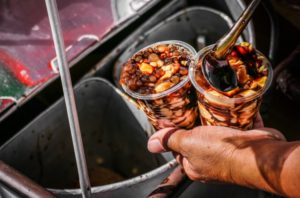
Not all heroes wear capes. This rings true for the legend known to me as the taho caller. Visiting the Philippines as a child, hearing the words, “taho,” being yelled out brought everyone to the streets, money in hand. Let me paint the scene. After begging your parents for pera (money), you run outside to see the taho vendor carrying a bamboo stick on one shoulder, balancing two aluminum buckets on each end. One bucket contained the soft silky tofu, and the other had a caramelized sweet syrup known as arnibal and tiny translucent pearls from the sago palm known as sago. The taho vendor would then proceed to hand you a warm plastic cup full of soft tofu topped with arnibal and sago.
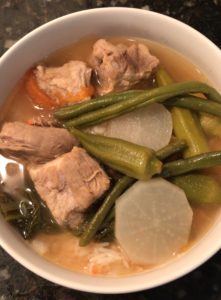
Ok, so you heard me talk about the snacks and street food, but what about straight up ulam? According to Google Translate, ulam means “dish,” but the way ulam in my brain it registers as “the food other than the kanin (rice).” Sinigang na Baboy (“sour” pork) is one of my Favorite filipino dishes. It’s a soup with baboy at gulay (pork and vegetables) such as spinach, kamatis (tomatoes), green beans, okra, and daikon cooked in a sour yet spicy tamarind broth. I’m extremely addicted to the sabaw (soup, more referring to the broth) and I’m known for drowning my kanin (rice) in its deliciousness.
I consider nilagang baka (boiled beef) as its counterpart, though they’re not really that similar. In my family, there’s this battle between which soup is better, sinigang or nilaga? Obviously, I’m in the sinigang, but my parents chose to teach how to make nilaga instead:
Luto sa mais (boiled chicken with corn) is a dish my dad is known for in my family. That leaves my mom kind of salty, because she was the one who taught him how to cook it. But she has so many dishes up her sleeve that the least she could do is give him this one! My mom learned to make luto sa mais from her mom who learned from her husband’s relatives. Luto sa mais is the Pampangan variation of Bulacan’s tinola. Depending on where you go, this dish may be cooked differently, as each place started adding their own twists to it. According to my dad, tinola means something similar to ‘boiled chicken.’
The last two soups I’d like to introduce are sopas and bulalo. Sopas is a creamy chicken and macaroni soup with various vegetables. I think of it as our version of chicken soup, which we often serve to someone who catches a cold. The bulalo soup I’m referring to though is the cup noodle version. Bulalo is beef bone marrow soup that originates from Batangas and tastes extremely good as cup noodles. Not sponsored, but the Lucky Me brand makes some good bulalo instant noodles.

Bistek is finally a dish I’m introducing that’s not a soup. The name, “bistek” sounds like beef steak but said in a Filipino accent. Bistek is pretty simple to make and the flavor mostly comes from the concoction of soy sauce and calamansi juice when slices of beef are marinated in it. Onions and ground black pepper are also added to the mix.
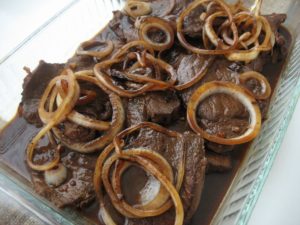
Chicken Adobo is the unofficial national dish of the Philippines. It was introduced into the Philippines by the Spaniards, but we put our own spin on it. It’s made by marinating chicken in a vinegar, soy sauce, garlic, and black peppercorn mixture. Don’t be surprised if you see a couple leaves in your adobo though, those are bay leaves. As a kid, I thought you could put any type of leaf into adobo, so I started collecting leaves outside for my mom to use in adobo. I’m glad I showed it her first and not decide to just throw it in the pot when she wasn’t looking.
Pancit Bihon is a rice noodle dish accompanied by baboy (pork), manok (chicken), karots (carrots), snow peas, cabbage, onions, and other vegetables. Because of Chinese Filipinos, noodles were introduced to the Philippines, and inspired so many noodle dishes. Besides pancit bihon, there’s pancit malabon, pancit canton, pancit palabok, etc. I’d say presentation-wise, pancit canton closely mirrors chow mein.


Now that you have a grasp on some ulam, don’t forget the inumin (drinks) to wash it down! You can try buko juice (coconut juice), calamansi juice (Philippine lime) mango juice, guava juice, or sago’t gulaman (made with brown sugar, water, gelatin and sago).
And finally, the desserts. Besides ube ice cream, I think maiz-queso (corn and cheese) ice cream is an underrated flavor. Although it sounds strange, its unique flavor will find its way to your heart. There’s also buko pandan! You’ll usually find this one on the table at Filipino birthday parties.
Magingat kayong lahat! (Take care everyone!)

